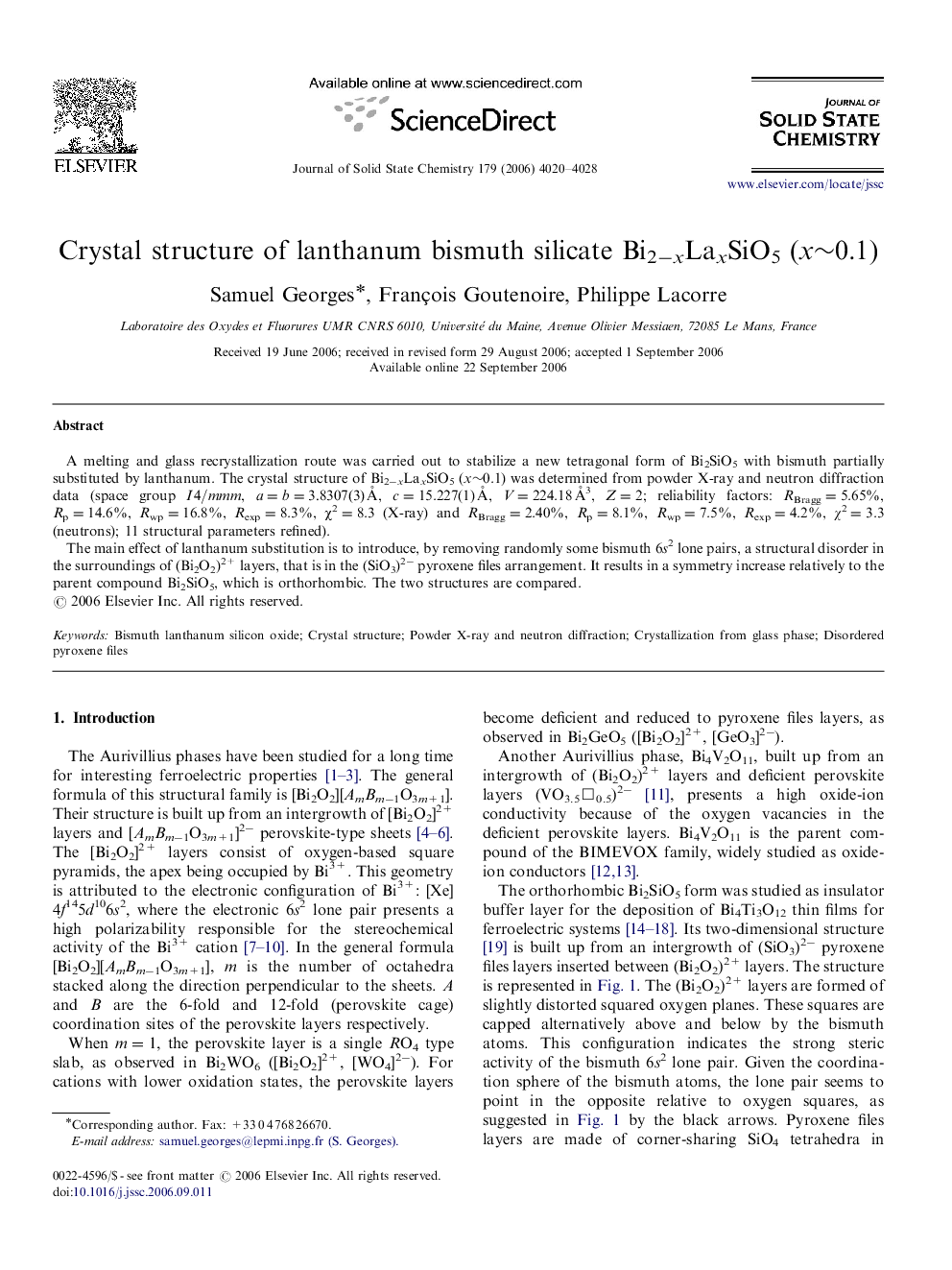| Article ID | Journal | Published Year | Pages | File Type |
|---|---|---|---|---|
| 1331792 | Journal of Solid State Chemistry | 2006 | 9 Pages |
A melting and glass recrystallization route was carried out to stabilize a new tetragonal form of Bi2SiO5 with bismuth partially substituted by lanthanum. The crystal structure of Bi2−xLaxSiO5 (x ∼0.1) was determined from powder X-ray and neutron diffraction data (space group I4/mmmI4/mmm, a=b=3.8307(3)Å, c=15.227(1) Å, V=224.18 Å3, Z=2; reliability factors: RBragg=5.65%, Rp=14.6%, Rwp=16.8%, Rexp=8.3%, χ2=8.3 (X-ray) and RBragg=2.40%, Rp=8.1%, Rwp=7.5%, Rexp=4.2%, χ2=3.3 (neutrons); 11 structural parameters refined).The main effect of lanthanum substitution is to introduce, by removing randomly some bismuth 6s2 lone pairs, a structural disorder in the surroundings of (Bi2O2)2+ layers, that is in the (SiO3)2− pyroxene files arrangement. It results in a symmetry increase relatively to the parent compound Bi2SiO5, which is orthorhombic. The two structures are compared.
Graphical abstractStructural relationships between Bi2SiO5 and Bi2-xLaxSiO5: (a) projection along a for Bi2SiO5, and along [110] for the local ordered description of Bi2-xLaxSiO5 and (b) projection along c.Figure optionsDownload full-size imageDownload as PowerPoint slide
